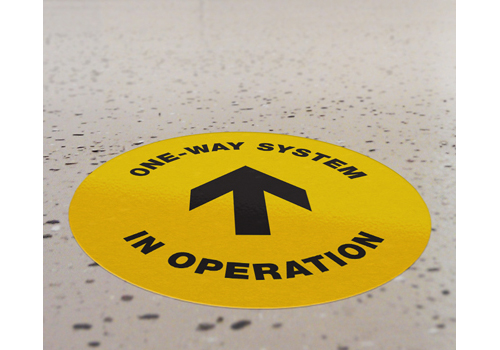When it comes to having clear, radiant skin, few beauty routines can compare with the Japanese and Korean skincare routine. Globally, the East Asian skincare craze has seen millions adopt new rituals, ingredients, and products based on centuries-old knowledge and cutting-edge innovation. But is it Japanese or Korean skincare routine: which is superior?

Both are incredibly effective in their own right, and knowing about their individual attributes will enable you to make a well-informed choice. If you are attracted to the sophistication of Japanese skin rituals’ minimalist elegance or the new, multifaceted Korean beauty philosophy of skin care, this book will guide you through the Japanese and Korean skincare philosophies, regimens, product types, and professional secrets so that you can glow from within.
Philosophy Behind the Routine: Simplicity vs Science
One of the most significant aspects in which Korean skin care differs from Japanese skin care is the attitude.
Japanese skin care is built upon prevention and long-term care. It is simple with few powerful products. The goal is to fortify the protective shield of the skin and retain youthfulness. Natural products and gentle formulations in most Japanese skin care products retain the health, calmness, and moisture of the skin.
Korean skincare, on the other hand, is starved for trends and leads the way. The Korean skin care routine is all about multi-steps with each product providing something unique such as brightening, firming, or moisturizing. The popular layering Korean skincare regime ensures penetrating ingredients and harmony of ingredients in order to get that dewy, glass-skin.
In conclusion, Korean skincare vs Japanese skincare is layering carefully vs minimalism.
Routine Comparison: Step-by-Step
Let’s explore what each routine is like and how they compare.
Japanese Skin Care Routine
A Japanese skin care routine consists of the following steps:
Double Cleansing – Begin with an oil cleanser to take off makeup and sunscreen, and then use a foam or cream cleanser to clean grime.
Lotion (Softener) – A moisturizing step that prepares the skin, but more so than toners.
Serum or Essence (Optional) – To address concerns such as aging or dullness.
Moisturizer or Emulsion – Retains moisture by employing milky or creamy textures.
Sunscreen – Another crucial component of the routine, to be worn daily.
Korean Skin Care Routine
The Korean skin care routine, then, usually comprises 8–10 steps:
Oil-Based Cleanser
Water-Based Cleanser
Exfoliator – 2–3 times a week to eliminate dead skin.
Toner – Prepares the skin pH and gets the skin ready.
Essence – Hydrates and aids skin cell turnover.
Serum or Ampoule – Corrects specific skin issues.
Sheet Mask – 2–3 times a week, for maximum hydration.
Eye Cream
Moisturizer
Sunscreen – Everyday, even indoors.

Comparing Japanese and Korean skin care routines, it is evident that the Japanese routine is simpler, whereas the Korean routine is more elaborate and varied.
Ingredients: Ancient Botanicals versus Modern Marvels
Both traditions have lovely ingredients, but with different flavorings.
Japanese Skin Care Products
Among the top Japanese skin care products are:
Rice Bran – Famous for brightening and anti-aging.
Green Tea – Full of antioxidants, soothing and protective.
Sake – Fermented rice, which gently peels and smoothes.
Camellia Oil – Moisturizing oil, which has been used in Japan for centuries.
Coix Seed – An ancient herbal extract that hydrates and cleanses.
These ingredients are commonly found in top Japanese skin care brands and are great for maintaining healthy, youthful skin over time.
Korean Beauty Innovations
In the Korean skincare world, you’ll often find:
Snail Mucin – Improves texture and boosts collagen.
Centella Asiatica – Heals and calms sensitive or acne-prone skin.
Niacinamide – Brightens and reduces redness.
Fermented Ingredients – Boost skin regeneration and nutrient absorption.
Propolis & Honey – Antibacterial and strongly hydrating.
This is why most skin care aficionados go to Korean skin care vs Japanese skin care seeking professional, quick-acting products.
Packaging & Aesthetics
Japanese skin care tends to be fond of subtlety and refinement. Visualize thin packages, less labeling, and high-end, agelessness to it. Hada Labo, SK-II, and DHC are some examples of such firms that do the best quality at minimalism and are the best Japanese skin care products available today.

Korean skin care, in contrast, is cute, colorful, and imaginative. It better lends itself to appealing to younger consumers with shiny packaging, adorable mascots, and playful product names—while some of the most sophisticated cosmetic science on earth is hidden behind the cute packaging.
Availability: Japanese Skin Care Products in India
Along with the growing trend of East Asian beauty, Korean and Japanese skin care products are now readily available in India. You can easily get a variety of Japanese skin care products in India on Amazon, Nykaa, and dedicated beauty stores. With mild cleansers to anti-ageing serums, Korean and Japanese skin care products are adaptable for Indian skin tone and climate too.
Likewise, Korean brands such as COSRX, Innisfree, and The Face Shop are readily available and have become household names for those embracing the Korean skin care routine in India.
Japanese and Korean Skincare Routine: Top Tips and Tricks
Here are expert tips to get the most out of your routine—whether you’re team J-beauty or K-beauty.
- Start Simple
If you’re new to either routine, don’t dive into a 10-step plan right away. Begin with a cleanser, toner (or lotion), moisturizer, and sunscreen. As your skin adjusts, add serums, essences, and exfoliants. - Be Consistent
Japanese skincare is all about consistency. Sticking to your Japanese skin care routine every day will yield better long-term results than switching products constantly. - Hydrate in Layers
One of the best tips for Korean skincare is to stack Korean skincare with light, watery products. Experiment applying toner, essence, serum, and moisturizer in light layers over one another to add moisture without weight. - Don’t Skip Sunscreen
Both regimens stress daily sunscreen. Even the most efficacious Korean serums or Japanese beauty products will be for nothing if your skin is subjected to constant UV rays. Use broad-spectrum SPF with moisturizer or anti-aging components. - Mix and Match
There isn’t one regulation that dictates you must use one routine solely. Most users pair and alternate the soothing, high-quality Japan skins with the special treatments of Korean skincare. For instance, you can match a Japanese cleanser with a Korean sheet mask or essence. - Watch Your Skin
The best skincare routine is one that keeps on changing according to your skin. Weather, hormones, and diet control the behavior of your skin. Take the good of both worlds—the Korean skincare regime for healthy and rejuvenated skin and the Japanese skin care corporations for nourishment and balance.
Final Verdict: Japanese vs Korean Skincare Routine
Japanese or Korean skin care routine, so the question arises, what’s the best option?
If you’re a minimalist who is yearning for an age-old ritual with luxury, nature-oriented products, then Japanese skincare is the path. But if you’re a tester who adores multi-step regimes, innovation in skincare science, and product hunting, then Korean skincare is your call.

Finally, the best routine for you is one that works for you. With greater and greater exposure to Japanese skin care products and Korean skincare in India, now you don’t need to learn and leave behind. Take what is best from both and create your own perfect skincare regimen.












